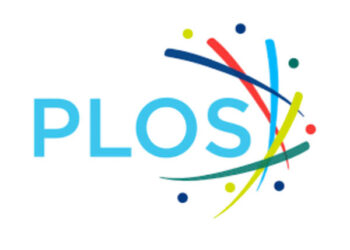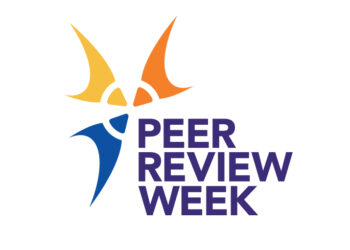An identity strategy offers publishers a powerful route to better understanding the needs of their users and delivering more user-centric experiences that promote engagement and usage. In a previous post, we explored why publishers have not embraced identity before and recent industry developments that make it a good time to reconsider an identity strategy, including changes in access patterns and emerging best practices and standards.
This follow-up post takes a closer look at how one publisher, Emerald Publishing, is developing their identity strategy and some of the challenges and opportunities they are encountering along the journey. The main take-away? Developing an identity strategy can have a profound impact on your organization, but there are some easy steps any publisher can take to start on that journey.

Why is Emerald focused on identity?
Emerald’s initial motivation was simply to ensure effective access controls and meet the changing demands of institutional customers. As we have all experienced over the last year, access is increasingly occurring outside of traditional work locations. The weaknesses of traditional methods for remote access led Emerald (and many other publishers) to explore alternatives, such as federated authentication that can support privacy-preserving forms of personalization.
As they began to roadmap more effective access workflows, Emerald identified a much bigger opportunity to better engage with readers, authors, and other stakeholders. Understanding user needs and workflows was fundamental to their approach to improving the individual information experiences that leads users to, and across, Emerald’s platform.
In 2020, the global pandemic and the increased demand for alternatives to the “big deal” added momentum to Emerald’s need for an identity strategy. Commercial influences of various kinds increased the value of flexibility and innovation, in particular to meet end-user expectations for personalization throughout the research lifecycle. Emerald’s strategy prioritizes enhanced recommendations generated by known preferences, interests, and areas of expertise of their readers. In developing a comprehensive identity program, Emerald staff challenged themselves to consider what this could mean toward the longer-term value they could offer users, asking: What does personalization mean beyond that?
Leveling up the “value exchange”
A key part of Emerald’s vision to embed user identity and personalization across the business was to develop individual profiles that could enable tailored experiences. However, many publisher platforms are geared toward institutional customer needs and do not optimize for individual information experiences (for example, low value offered when sharing marketing data via registered accounts). In addition, Emerald recognized that users needed a fair trade, i.e., to be offered something equally valuable in return for information about themselves.
Emerald’s goal is to “level up the value exchange between Emerald and its users,” says Nicole Tattersall, Head of Digital Engagement of Emerald. They aim to offer high-value, customizable services that match users’ individual preferences and build trust, and — in return — generate usage from invested readers and rich user profiles. To earn the attention of scholarly users faced with a bewildering array of choices, Emerald’s strategy is rooted in an understanding that people will gravitate towards the brands they trust, and Emerald is working to be a highly trusted brand.
Sarah Boyd, Head of Digital Experience at Emerald, is looking at sharing this insight into their user community with institutional customers, with the goal of helping both publishers and libraries make the most effective decisions in serving researcher needs. Direct relationships with users also allow Emerald to help extend research journeys beyond institutional holdings to identify and recommend relevant content to which they do not yet have access. Emerald recognizes an unavoidable tension between these user-centric models and the traditional curation and custodian roles of academic libraries. However, embracing a mutually beneficial identity strategy means building direct relationships with users in part to help them get more value from library services.
Emerald sees their content platform business on a path to becoming an experience platform, shifting the strategic focus to information needs and practices, and away from containers of text for sale. Using Spotify as an analogy, an experience platform allows you to do more than listen to music; you’re also engaging with the platform to organize the songs you like as well as discover new music based on those preferences. With their identity strategy, Emerald wants to earn trust and deliver value via platform experiences, so users will keep coming back for more.
The benefits for Emerald
An important part of delivering a positive online experience is being able to access your content and services from anywhere, anytime. Emerald is keeping this in mind as they work to offer a flexible range of authentication options for both institutions and their end users. This proved particularly valuable during COVID-19 shutdowns, as so many users were forced to work from outside their traditional institutional infrastructure (including their entitled IP ranges).
Another driver for Emerald’s identity strategy is enabling new business models and reducing reliance on all-inclusive packages. They are experimenting with “small deals,” to diversify from the traditional “big deals,” where relevant content in small increments can be surfaced for a user and made available through e-commerce options, like rental or pay-per-view. Boyd explains that Emerald wants the user experience to feel “fully seamless,” where researchers can focus on getting the answers they need and may not even be aware that they have moved through a few different systems or platforms in the process. This ties into their key business goal of driving repeat usage.
Emerald’s identity strategy is built around product and marketing staff working together in a “virtuous circle,” creating a more engaging and immersive onsite experience. This cycle encourages users to build profiles that help Emerald better understand their needs, thereby feeding into more effective off-site engagement through curated content recommendations. This feedback loop would then ideally dovetail with more precise and effective content commissioning cycles and more efficient submission, peer-review, and editing workflows. As Boyd puts it, Emerald’s identity strategy “really underpins our entire, end-to-end proposition from author content creation and submission through to publication consumption.”
At its heart, Emerald is aiming for more than demographic user profiles; instead, they are aiming to develop a rich understanding of their user community – what they want to achieve and how they prefer to interact with various resources. Tattersall says, “we want to establish more emotive connections so we can serve up something that’s more meaningful and relevant for those users.”
What about metrics?
Emerald found that two-thirds of their users create profiles with a personal email address, which suggests they expect a consumer or individualized experience. As users are more likely to compare their Emerald interactions against the experiences of other personal services, such as Spotify or Netflix, Emerald wants to offer something comparable or better in terms of satisfaction.
Another important element in the plan is experimentation, as Emerald recognizes this is an area where the industry needs to learn what works. Rather than large scale implementations, Emerald are focused on starting small, learning from lots of little experiments, and building on what works. To support this, managers are developing scorecards and other tools to measure performance and engagement that can drive the cost/benefit analysis needed to stay agile. Unsurprisingly, Emerald found that the hardest task is shifting the organizational mindset to data-driven and user-first decisions, and away from traditional models of scholarly value.
What publishers can learn from Emerald’s experience?
One important takeaway for Emerald was clarity over the costs of doing nothing. While implementing their identity strategy involves significant costs and risk, Tattersall noted that “the bigger risks lie in not pursuing it and losing our competitive edge and existing users. What we’re doing with identity is underpinning and fueling the future vision of Emerald, and so the risk is worth it.” While it’s easy to focus on the effort involved to develop an identity strategy, every publisher should also consider the risk of not doing it.
In Emerald’s example, where identity strategy is linked to their digital experience strategy, we hope that publishers will take away inspiration to make data-led decisions, without feeling pressure to make top-to-tail changes to their organizations. A good starting point for any publisher is to improve their identity management to the level where they can simplify access to their content – more important than ever during this pandemic era of heavy remote usage – and start building basic user profiles that help you better understand user needs.
Where publishers are relying on a 3rd party hosting platform, they should make use of the identity & access data available to them. And, if it is not, publishers should be demanding access to this data critical to agile decision making. For Emerald, who aim to develop a broad array of success metrics to monitor progress, this new territory is not an exact science and they are willing to learn as they go.
The authors would like to thank the following Emerald Publishing staff for their contributions to this post: Sarah Boyd (Head of Digital Experience), Nicole Tattersall (Head of Digital Engagement), and Jim Swainston (Senior Product Manager, Data Services).
Discussion
3 Thoughts on "Driving Responsibly with Identity Management (Part 2: A Case Study)"
I find this a phenomenal statistic: “Emerald found that two-thirds of their users create profiles with a personal email address.” I know I am a n=1 but I use content on the Emerald site almost weekly (thank you Emerald for your LIS content!) and I have never been tempted to make a user profile. I’d love to learn more about what is driving people to do this! What I am not realizing I’m missing out on?
I interpreted that as ‘two-thirds of users who created a profile used a personal email address’.
Hi Lisa, Thanks for engaging with us on this! To clarify the statistic – we’re seeing that two thirds of ‘profile holders’ sign up with a personal email address, suggesting that when doing so, they are operating in ‘personal mode’, as they would on other digital content platforms (a really interesting hypotheses that we’re exploring in terms of user intent and expectation). We’re not seeing two thirds of our overall users signing up for a profile, so you’re not on your own not having a profile – and this is what we want to change. Our aim is to increase the value-add to users in the profiles area with relevant resources and additional functionality that supports users in achieving their goals so that we can encourage users to sign up and get more out of their Emerald experience. We’re at the start of a journey here, with the vision of adding value, building trust and providing the best experience we can and are continually looking for insight into what users would find valuable in the profile area. If you’re interested and would like to influence our plans here, I’d be really keen to have a chat and get your thoughts. You can contact me at ntattersall@emerald.com.


